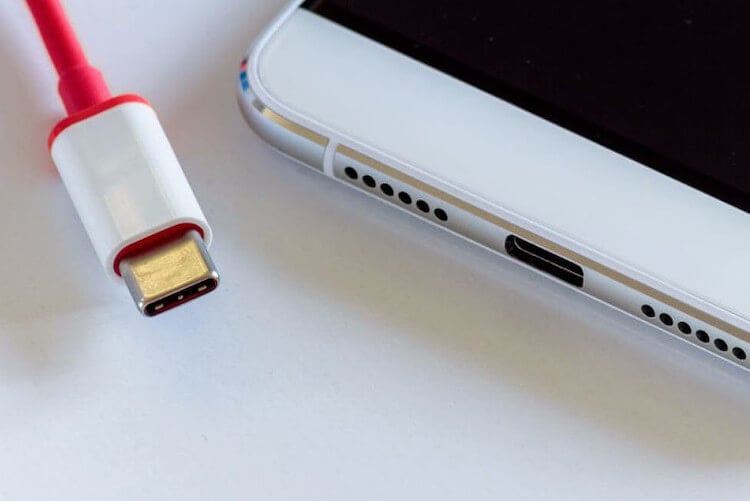The European Union’s requirement that gadgets be charged exclusively via USB Type-C ports from 2024 is a welcome move in many ways. This primarily affects Apple’s stubborn attachment to the Lightning port instead of a much more versatile connector, cables and chargers. But it also means the end of new USB-A and microUSB powered accessories, from headphones to portable speakers. The exception is laptops, which have a 40-month grace period until 2025. But, the first euphoria has passed and now we have questions about such a decision. Is it good?
One universal connector is better than many different ones. But not everything is so simple.
Advantages of the universal charging connector
This all sounds like good news – after all, no one wants to mess around with different cables and chargers. In addition, the EU directive estimates that full transition to USB Type-C will reduce greenhouse gas emissions by about 180,000 tons of CO2-equivalent, material use by about 2,600 tons and hazardous e-waste by 980 tons per year. So far everything sounds very good.
Despite good intentions mandatory use of USB-C ports does not solve many problems with the standard. One cable for everything doesn’t always work so well in practice.
Знаете, где собраны лучшие гаджеты с AliExpress, с любовью отобранные заботливыми админами? В этом Telegram-канале.
Benefits of USB Type-C
USB Tupe-C is a powerful “flex” connector. But the shape of the port is not the only factor that should interest us. The Alternate Mode standards supported by the devices at both ends of the cable are just as important. For example, USB Type-C headphones only work if your phone, tablet, or laptop supports USB Type-C audio. Even the data transfer speed and charging power depend on the port sub-rating such as USB 3.2 Gen 1 or Gen 2, USB 4 or Thunderbolt 4. Not to mention what you need the right cable for maximum data and energy transfer between gadgets. But in form it is all one single connector.

All these wires can be replaced by one of them.
It’s also easy to break the standard. A number of gadgets to charge require USB Type-C cable on both sides, while others need to have a regular USB-A on one side. Meanwhile, other devices flatly refuse to work with cables that do not meet the specification, which are sold at a low price on various marketplaces. For example, OnePlus cables could not charge Pixel phones back in 2015, and some cables still don’t. There are problems in the opposite direction too – Google’s 3.5mm adapter and USB Type-C headphones did not work on OnePlus phones.
Are all USB-Cs the same?
Many have encountered the fact that the desired function was not supported or did not work properly. Support for the USB Type-C feature is disappointingly opaque, and requiring gadgets to be charged through this port will definitely not solve this problem. In addition, bad cables will still add to the statistics of electronic waste.
However, the EU is doing its best to ensure that charging is universal. The directive requires USB Type-C gadgets “charging at voltages greater than 5 volts, or current greater than 3 amps, or power greater than 15 watts, to include the USB Power Delivery charging protocol.” In theory, all USB-PD plugs will work with all higher power USB Type-C gadgets in the future, reducing the need for multiple plugs for different gadgets and charging standards. But this still cannot completely save us from the need to use different wires.
Заходите в наш Яндекс Дзен. Там Оооочень интересно!
Support for all functions within USB Type-C and full connector versatility cannot yet be realized. In particular, the directive does not prevent manufacturers from using proprietary standards in addition to USB Power Delivery. This is probably a good thing for not stifling innovation, but it still means that some phones and other gadgets can continue to charge much faster with some sockets than with others. This adds further confusion to all of these USB-A, Quick Charge and other technologies.

If your phone has USB Type-C, this does not mean that it is fully compatible with other phones.
Will there ever be a universal charger for everything?
The EU’s move, on the whole, is long-awaited and correct. It will help cut down on e-waste and reduce the annoying chargers we’ve been dealing with all these years. But given the above, perhaps it is too late and should have thought faster and started earlier. If we had been offered a single charging standard five years ago, much would have been better. So many of its variations did not yet have time to breed.
Android-смартфон с Lightning и iPhone с USB-C. Я ничего не перепутал.
Unfortunately, the EU and other regulators are bogged down in a bureaucratic morass and constantly are in a state of catching up. So we missed the standard, which could become truly universal, but in fact gave us even more headaches.
While much attention has rightly been focused on Apple’s reluctance to unify its devices, we did not notice how good USB Type-C in its idea itself ceased to be universal. Let’s wait and see what happens. For now, we just have the same shape for all charges (if it will be in Europe, we can say that it will be all over the world). In fact, we were simply told something like that the cars would run on gasoline, and few people thought that there were a lot of variations of it with different octane numbers. And that means we will never get gas stations with one gun. Well, you get the analogy.
The post Do not rush to rejoice that USB Type-C will be everywhere. The authors of the law did not take into account something appeared first on Gamingsym.
